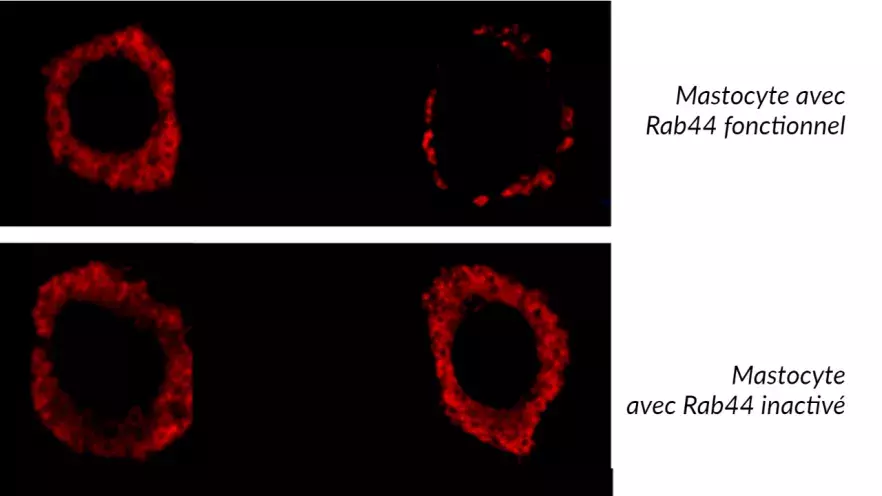Published on 05.05.2022
In France, 18 million people, or 30% of the population, suffer from allergies. The cause? A disruption of the immune system which reacts disproportionately to substances which are a priori benign for the body, such as peanuts, dust mites or pollen, known as allergens. These reactions can be cutaneous, respiratory (asthma) or generalised, with a global rush of the immune system in the case of anaphylactic shock.
Mast cells have been implicated in the occurrence of allergic reactions. Their activation, due to the binding of the IgE antibody complex coupled to allergens, leads to the release of vesicles containing various inflammatory mediators (histamine, serotonin, etc.). "It is in fact this degranulation phenomenon that leads to allergic inflammatory reactions," explains Gaël Ménasché, co-director of the Molecular Bases of Immune Homeostasis Abnormalities laboratory at Institut Imagine. In a study published at the end of April in The Journal of Allergy and Clinical Immunology, his team, in particular Cyril Longé, first author of the study, identified for the first time the key role of the Rab44 gene in this degranulation within mast cells [1].
Le rôle clé du gène Rab44
"By using CrispR-Cas9 molecular scissors in mice, we were able to inactivate the Rab44 gene and thus partially block the signal that triggers the transport of vesicles containing inflammatory mediators to the mast cell surface," explains the researcher. The result: degranulation was greatly reduced (see image below). At the same time, this reduced the allergic reaction.
In 2016, the laboratory identified a similar role for the Kif5b gene [2]. However, the function of this gene in intracellular trafficking was universal, common to all cells of the organism and therefore went beyond the strict framework of mast cells. Too general, not specific enough, this gene did not make it possible to envisage a targeted therapy. "The advantage of the Rab44 gene is that its role is limited to mast cells. We know that these immune cells are specifically involved in allergic reactions. This makes it an excellent therapeutic target," Gaël Ménasché concludes.

